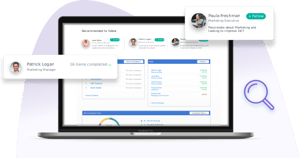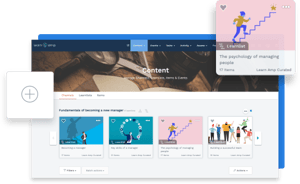Trend Hunter identified microlearning as a key trend for 2020, but not all microlearning programs are created equal. At its best, microlearning takes advantage of how we naturally learn. Before you rush to include microlearning in your L&D program, start by asking yourself the right questions.
Microlearning: Here’s How To Get It Right
Microlearning is on the rise; in fact, it’s becoming so popular that Trend Hunter listed it as one of the top trends for 2020[1].
But to make microlearning a useful part of your Learning and Development program, you need to take a step back and figure out how it can be incorporated into your overall learning strategy.
Here are 6 ways to make sure that you, and your employees, get the most out of microlearning.
1. Just Enough, Just In Time
McKinsey reports that globally, companies spend up to $100 billion a year on L&D. Despite that, only 25% reported that their L&D programs measurably improved business performance[2].
 One reason for this problem is information overload. In one study of microlearning, for example, 20% of the participants reported that there was too much information released too frequently.
One reason for this problem is information overload. In one study of microlearning, for example, 20% of the participants reported that there was too much information released too frequently.
To avoid flooding learners with content they can’t use, consider the principles of lean learning, based on Toyota’s famous lean manufacturing system.
Steve Glaveski, CEO of start-up accelerator Collective Campus, summarises lean learning as:
-
- “Learning the core of what you need to learn
- Applying it to real-world situations immediately
- Receiving immediate feedback and refining your understanding
- Repeating the cycle[3]”
To make microlearning work for you, you need to keep the learning and development experience in the so-called “Goldilocks” zone. Provide learners with just the right amount of information—not too much, not too little—and at the moment they are looking for it.
2. Rinse And Repeat
Microlearning is a great way to work with our brain’s natural learning process, rather than against it. Back in the 19th century, Hermann Ebbinghaus observed that over half of all new information was forgotten within just a few days unless actively refreshed. Traditional one-off training sessions can easily fall victim to this “forgetting curve.”
By contrast, microlearning allows learners to access key content whenever they need it. Repeated engagement with new knowledge helps your employees keep the information front of mind. If you set up your microlearning programs to encourage this “spaced repetition,” studies suggest that you could see improvements in retention of up to 80%[4].
3. Get Your Game Face On
 Microlearning lends itself very readily to gamification.
Microlearning lends itself very readily to gamification.
Adding game-like elements, such as competitive quizzes or checkpoints, can be highly motivating, increasing the frequency of engagement with the learning materials and therefore promoting more rapid learning.
Setting up leader boards can encourage learners to compete against each other.
Assessments, checkpoints, and certificates can boost the feeling of reward. Individualised pathways with dynamic tasks based on the learner’s start date can keep motivation levels high for the long-term. Quick tests can make assessment more enjoyable for the learner.
4. Get Organised
Use microlearning to break down longer learning online courses into organised chunks. This reflects our brain’s system for categorising information, which in turn supports greater levels of information retention.
For example, researchers at the Dresden University of Technology reported that learners presented with short, frequent microlearning assets retained 20% more information than those faced with long-learning sessions[5].
5. Help Yourselves
Microlearning is a great way to support self-directed learning. Learners can choose when they learn, what they learn, and how often they learn.
 Employees can review new learning content on their way to work or during a lunch break. By tagging microlearning assets to help learners find them easily, you can help individual learners manage their own unique learner systems.
Employees can review new learning content on their way to work or during a lunch break. By tagging microlearning assets to help learners find them easily, you can help individual learners manage their own unique learner systems.
Instead of skimming through a longer course to find the information they need, they can skip straight to the microlearning unit that can help them solve the problem in front of them.
6. Big Picture Thinking
Elements of microlearning that are presented without a wider context can feel disconnected. And won’t necessarily help learners to retain new concepts.
The learning may be “micro,” but to power up your microlearning program, think macro.
Ask yourself:
- What are the overall learning outcomes you are promoting?
- How can those be measured?
- How will they tie into the learner’s overall professional performance?
Overall, microlearning can be a powerful tool in your L&D toolkit but only if you think carefully about how it fits into your overall learning strategy and desired outcomes.
Want to learn more? Download our new eBook, Microlearning 101: A best practice guide to supercharge your L&D program. Discover how to implement microlearning to support self-directed learning, increase learning retention, boost learner satisfaction, and save money and time.
References:
[1] Micro-Learning
[2] Getting more from your training programs
[3] Where Companies Go Wrong with Learning and Development
[4] Using a Spaced-Repetition-Based Mobile Learning Game in Database Lectures
[5] Distributing vs. Blocking Learning Questions in a Web-Based Learning Environment




